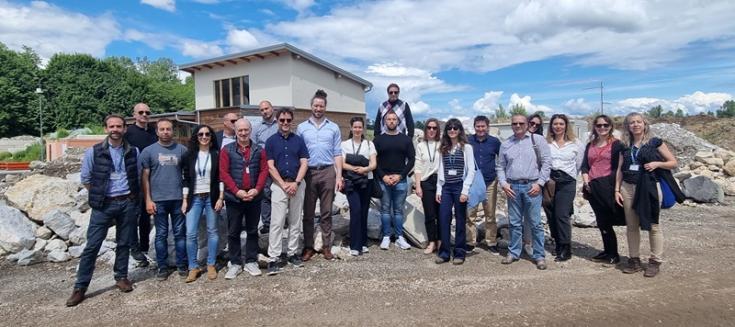Overcoming societal, technological and market challenges

What are the societal, technological and market challenges arising from the management of inert and/or inorganic waste? How to overcome them? For their second Transnational Learning Journey (TLJ), on 22-23 May in Maribor, INERTWASTE partners and their stakeholders brainstormed on these questions.
Once again, during this Transnational Learning Journey the INERTWASTE partners and their stakeholders proved their appetite for collaboration and their willingness to support each other, suggesting ways to overcome the barriers based on their own regional experience.
Participants discussed about the difficulty to find right economic models or adequate support (financial challenges), how to optimise recycled materials and find land (technological challenges), or some specific societal challenges like the lack of awareness, the lack of communication between companies and research centers and the “not in my backyard” attitude. After this TLJ, participants have a better understanding of the root causes behind these challenges. This should help participants to find adequate solutions to valorise inert and/or inorganic waste despite various challenges.
They can also take inspiration from the various good practices from partner regions presented. These included an example from Navarra (Spain), where inert waste generated by a mining company is mixed with organic materials, creating technosoils to restore mines and improve soil properties. Similarly, in France a mix of clay soil and inert waste mixtures has been used to restore protected dry grasslands and quarries. Other practices presented came from Denmark: a digital solution to renovate, transform and demolish buildings and the definition of a CO2 reduction path and adoption of climate law by 98 municipalities. In Slovenia, a public service holding involving several companies active in the waste, energy and water sector, was set up to create synergies between their operations to enhance circular economy.
On top of the extensive session of Good Practices presentation (all available in the event page), the TLJ included three additional sessions: a Sustainability Jam, a Regional SWOT analysis, and a study visit.
Sustainability Jam
Under the guidance of Guldborgsund Municipality, partners and invited stakeholders identified key challenges (financial, technological, societal, regulatory/legal) and delved deeper into their root causes using the 5 whys method. Following this methodology, participants drilled down to the root cause of the challenge by asking “ Why?” five times.The second step of the method is to follow the counter-measure, once it became apparent, to prevent the issue from recurring.
Regional SWOT analysis
The regional SWOT analysis focused on the policy instrument and territorial challenges of the regional host, the Regional Development Agency of Podravje – Maribor. Discussions followed two directions: how to update the Strategy for the Transition to Circular Economy in the Municipality of Maribor and how to successfully upscale it to the regional level. Navarra, Region Sud and Guldborgsund brainstormed in groups and provided useful feedback to the Municipality of Maribor. These included potential solutions to overcome the challenges identified by the Slovenian actors such as aligning 41 municipalities and ensuring their political commitment but also avoiding or mitigating the financial impacts on the population.
Study visit
The study visit included two stops: the revitalisation of Building 2 of Kreativni park Drava and the demonstration site Dogoše for re-use of construction and industrial waste. Dogoše is Nigrad’s collection and recycling facility. Here, inert waste from public works (road construction and sewerage infrastructure in the city of Maribor and neighbouring municipalities) is collected and recycled for reuse in other construction works. This facility was built as a demonstration site and funded by the EU Horizon project Cinderella.